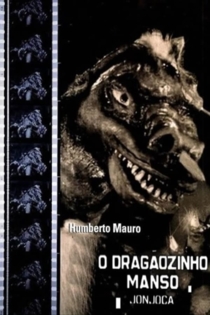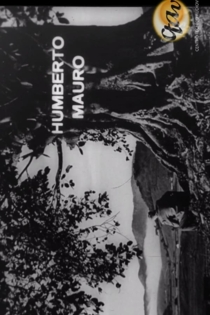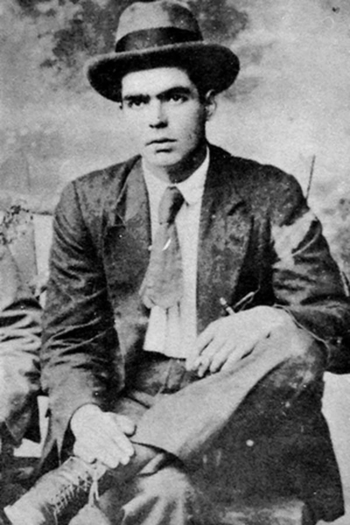
Humberto Mauro
1897 - 1983Mauro's second feature film Thesouro Perdido (Lost Treasure) won the Brazilian "Film of the Year" award in 1927. Later that year, Phebo Sul America Film was reorganized into Phebo Brasil Film. The first film released under the new Phebo was Braza Dormida (Sleeping Ember). Braza Dormida was a boxoffice success and furthered Mauro's career as one of Brazil's leading directors.
In July 1929, Mauro's final film for Phebo Brasil Film, Sangue Mineiro (Blood of Minas Gerais), was shown in Cataguases. In 1930, the film was given a nationwide release. The film was critically and popularly acclaimed. This was the first film in which Mauro worked with Carmen Santos who would star in many of Mauro's later films.
Phebo Brasil Film did not have the resources to continue to produce films. Adhemar Gonzaga offered Mauro a directing job for Cinédia, which was centered in Rio de Janeiro. Gonzaga had started to shoot Lábios sem Beijos (Lips Without Kisses) which starred Carmen Santos. However, Carmen became pregnant was unable to finish production. Gonzaga handed the project over to Mauro, who both directed and photograpghed the film, in March 1930. Mauro decided to make the film silent even though sound was available. He wanted to explore the possibilities of silent film. Upon release in 1930, the film won the Jornal do Brasil film of the year award. Mauro acted as cinematographer for Cinédia's second film Muhler (Woman).
Mauro began shooting Ganga Bruta in September 1931. The film was not completed until 1933 due to cast replacements. The film was silent with synchronized sound recorded on Vitaphone discs added later. The film received little acclaim until two decades after its release.
Mauro co-directed his first talking film with Adhemar Gonzaga. A Voz do Carnaval (The Voice of Carnival) was a musical. Afterwards, Mauro left Cinédia for Brasil Vita Filme in 1934. He directed two feature films and several documentaries for Brasil Vita Filme.
In 1936, Mauro joined the Instituto de Nacional do Cinema Educativo (INCE), which was then the government office for educational and propaganda films. Mauro shot hundreds of documentaries when he was working in INCE, and he also shot his last three movies: Descobrimento do Brasil (The Discovery of Brazil), Argila (Clay), and O Canto da Saudade (The Song of Yearning). His final film was Carro de Bois (Ox Cart), a documentary, in 1974.
Description above from the Wikipedia article Humberto Mauro, full list of contributors on Wikipedia.
Entrevista de Humberto Mauro a David Neves e Alex Viany
Alex Viany, David Neves
Humberto Mauro, Alex Viany
Celebrating his 80th birthday, pioneer Brazilian filmmaker Humberto Mauro talks about his life, work, and the project "A Noiva da Cidade".
Entrevista de Humberto Mauro a David Neves e Alex Viany

Favela dos Meus Amores
Humberto Mauro
Silvio Caldas, Jaime Costa
Two young men from Paris bring "wonderful civilizing ideas" into the brain. But, as they returned without pity, they began to call for an auction of the furniture and objects of art that garrison their "garconiére", last vestige of the passage of opulence. The great idea would be to install a cabaret in the favela for tourists in search of new sensations and also for the inhabitants of the city. On the hill, one of the boys experiences the greatest surprise: he found there, living among the humble, teaching to read to the children, Rosinha, an enchanted little princess, queen of the hill.
Favela dos Meus Amores

Brasilianas 8 A Velha a Fiar
Humberto Mauro
Mateus Colaço
A Velha a Fiar illustrates a Brazilian folk song in which a being or entity is always predating another being, but is in its turn predated by some other animal, until the circle closes. It begins like this: an old woman is quietly weaving and a fly disturbs her; a spider eats the fly; a mouse eats the spider; a cat chases the mouse and so on...
A Velha a Fiar

Lagoa Santa
Humberto Mauro
The findings of Danish paleontologist Peter Lund. The landscape of the region of Lagoa Santa, the men, the houses and the animals. Some of the caves from where Lund collected the remains of prehistoric animals and humans. Some fossils from the caves of the Lagoa Santa region. The fossils of the Lund room in the National Museum of Rio de Janeiro.
Lagoa Santa

O Canto da Saudade
Humberto Mauro
Mário Mascarenhas, Claudia Montenegro
Coronel Januário's goddaughter, Maria Fausta, is having a secret affair with João do Carmo. While her godfather is engaged in his political campaign for mayor of the city, the couple disappears. Galdino, an accordionist who is secretly in love with her, goes looking for them.
O Canto da Saudade
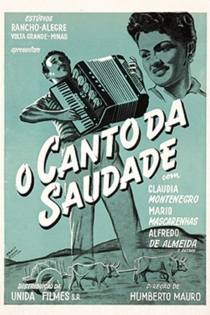
Mulher
Octávio Gabus Mendes
Carmen Violeta, Luis Soroa
Carmen, a poor and beautiful woman, lives in a shantytown in Rio de Janeiro. All men desire her, including her stepfather, but she only has eyes for her boyfriend, Milton. After being expelled from home, she finds out her lover is married. Unhappy with her life, she finds a place in a boarding house and tries to find a job, with no success. Tired and starving, she ends up passing out in the street, being helped by a passer-by, who leaves her at writer Flávio Martins's house, a man torn between the proposal of an arranged marriage, an old flame, and the new guest.
Woman

Argila
Humberto Mauro
Carmen Santos, Celso Guimarães
In Rio de Janeiro, Gilberto (Celso Guimarães) is a talented artisan engaged of Marina (Lídia Mattos), working in a pottery factory. He is hired by the millionaire widow Luciana (Carmem Santos) to perform a restoration in her castle in Correas, a district of Petrópolis. He suffers an accident and Luciana lodges and treats him for a long period, and they fall in love for each other.
Clay

Carro de Bois
Humberto Mauro
Hugo Carvana
Ox carts are still part of the landscapes of the Brazilian badlands, in a mixture of usefulness and poetry. Filmed in Volta Grande, in the Zona da Mata mesoregion of Minas Gerais, it was Mauro's only film in color and also his last.
Carro de Bois
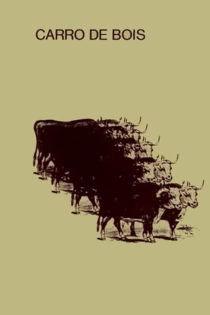
Brasa Dormida
Humberto Mauro
Luis Soroa, Nita Ney
A young man from Rio who, down on his luck in the capital, takes a job as manager of a sugar mill in the country, where he finds love with the mill owner’s daughter. The former manager, who had been demoted for incompetence, becomes jealous and tries to sabotage the mill.
Dormant Embers


